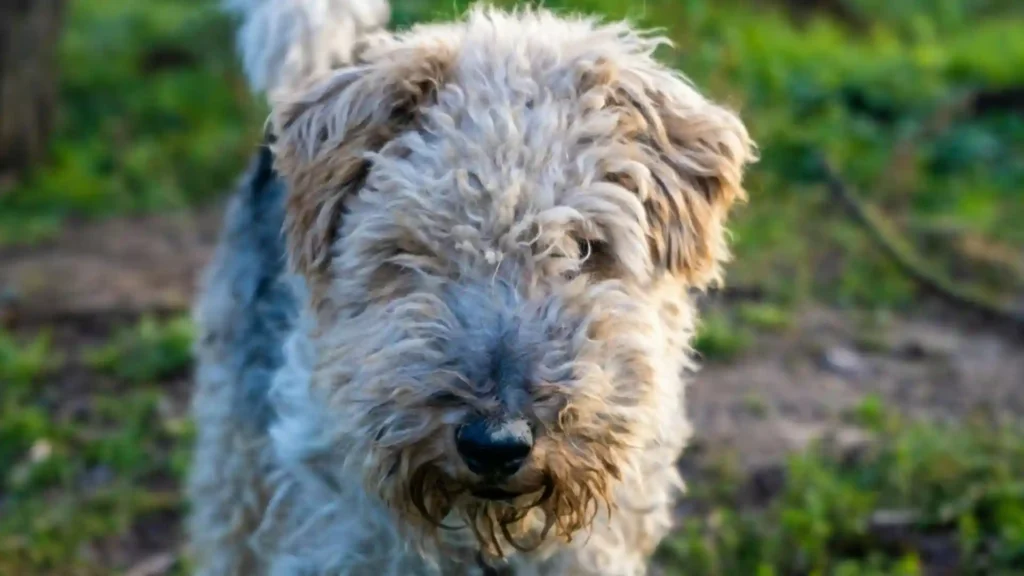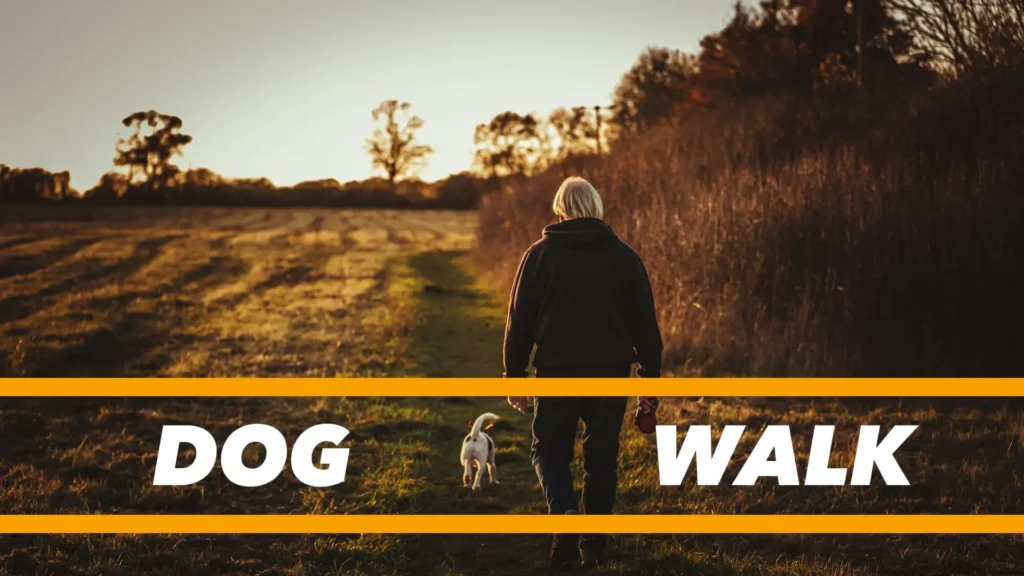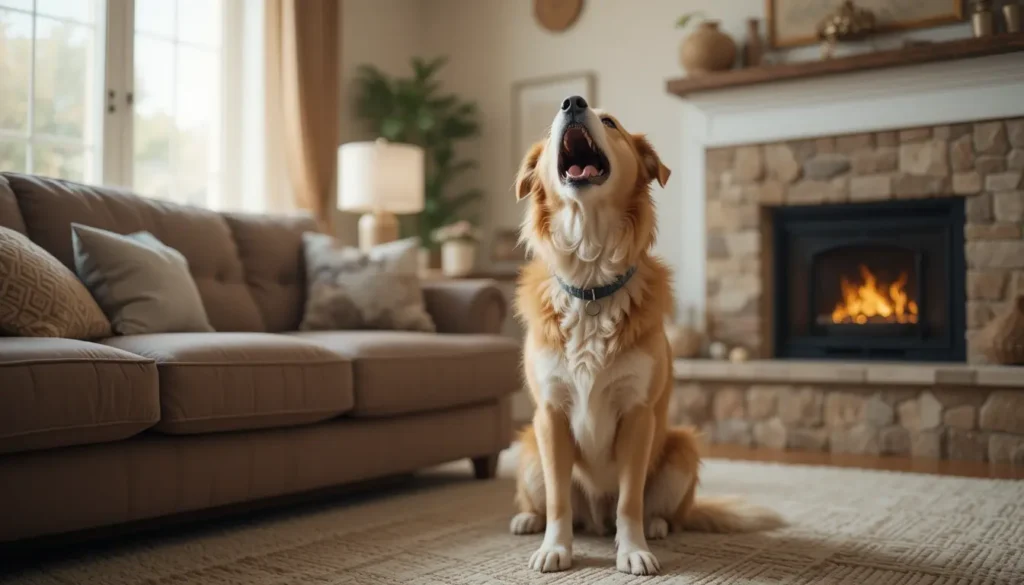Dogs need and behavior changes, just like humans, according to their ages. So, it is essential for you, to change the care practice to conform their life stages. Proper care at each life stage can contribute to your dog’s overall health, happiness, and longevity.
Understanding the Different Life Stages of Dogs
Generally, a dog has four stages in life. Before diving into the specifics of care, it’s important to know the general life stages of a dog:
Puppy (0-1 year)
Puppy is early stage of life, full of rapid growth, socialization, and learning. This is the most crucial stage, because during this phase, puppies develop crucial behaviors and skills, such as house training, obedience, and social interactions.
According to Dr. John Smith, a renowned veterinary behaviorist, “Puppies are like sponges, absorbing everything around them. Proper socialization during this time is essential to ensure they grow up well-adjusted and confident.”
Adolescent (1-2 years)
This is the period of increased energy. This stage can resemble the teenage years in humans, where your dog may test boundaries, exhibit stubbornness, and experience a surge of hormones.
Dr. Emily Turner, a pet behavior consultant, notes, “Adolescence in dogs can be a challenging phase, as they often push the limits of their training. Consistency in training is crucial during this time to prevent bad habits from taking root.”
Adult (3-6 years)
This is typically, the healthiest period, where your dog is energetic, stable, and balanced. By this time, dogs are fully matured physically and emotionally. They are usually at their peak in terms of energy levels, stamina, and health.
Dr. Sarah Lee, a veterinarian, points out, “Adult dogs often have the energy to engage in activities such as running, hiking, or playing fetch. It’s important to maintain a balanced diet and regular exercise to ensure they remain in top health during these years.”
Senior (7+ years)
This is the stage of decaying. Dogs start to slow down physically, and age-related health concerns may arise. Senior dogs may experience some common matters like joint issues, dental problems, and a decline in vision or hearing. Regular veterinary check-ups, in this stage, are essential to address any emerging health concerns.
Dr. Michael Anderson, a specialist in geriatric pet care, explains, “As dogs age, it’s important to monitor for signs of discomfort, such as limping, lethargy, or changes in appetite. Early detection of health issues can make a significant difference in their quality of life during their senior years.”
Dogs Care in Different Life Stages
Each of these stages requires different care approaches. Let’s break it down.
Puppy Stage: Foundation for a Lifetime of Health and Emotion
You already know that the first year of a dog’s life is crucial for laying the groundwork for their long-term health, behavior, and well-being. During this stage, puppies are most impressionable. You, as a pet parent, pay extra attention in the first year of dog, but this period is not only about feeding and basic care but also about providing a solid foundation for emotional, physical, and mental development.
Nutrition
Puppies need a diet specifically formulated for their own growth and energy levels. A proper nutritional balance during their early months is essential for their developing bodies and immune systems.
“Look for food labeled ‘puppy formula,’ which has the right balance of protein, fat, and essential vitamins,” advises Dr. Karen Becker, a holistic veterinarian and expert on animal health. She emphasizes the important of selecting high-quality ingredients, as these support not only physical growth but also brain development. “The early diet impacts behavior, so choosing nutrient-dense food is key,” Dr. Becker explains.
A balanced diet ensures that your puppy has enough energy for play and development without putting excess strain on their organs or bones.
Training and Socialization
There is no alternative for early socialization as this is crucial to developing well-adjusted dogs. Exposure to different environments, people, and other pets can prevent behavioral issues later on.
Dr. Ian Dunbar, a renowned animal behaviorist, recommends starting puppy training as early as 8 weeks old, focusing on positive reinforcement techniques. “Socialization is vital to prevent future fears and anxieties. A well-socialized dog is less likely to develop aggression or nervousness around new experiences,” Dr. Dunbar emphasizes.
Make sure to socialize your puppy in a controlled and secured environment to ensure safety and build confidence, which is essential for their overall mental well-being. For instance, introducing them to various sounds, surfaces, and new animals can help them develop a sense of comfort and adaptability in different situations.
Exercise
While puppies have lots of energy, their bones and joints are not matured and still developing. It is advised to take some precautions and maintain some routines for their exercise. Dr. Marty Becker, another well-known veterinarian, advises avoiding long runs or heavy jumping until your puppy’s bones are fully formed, which typically occurs at around 18 months.
“High-impact activities should be limited in young dogs to prevent stress on their developing musculoskeletal system,” says Dr. Becker. Instead, gentle play and short walks are ideal to burn off energy without risking injury. Regular but moderate exercise helps build muscle tone and supports healthy bone development without overloading immature joints.
What Should You Do at the Puppy Stage
Introduce your puppy to different environments like parks, other dogs, and various household sounds to reduce fear-based behavior in adulthood. Dr. Dunbar stresses the importance of exposing puppies to positive experiences with strangers, cars, and different surfaces to ensure they grow up adaptable.
Start crate training at this stage and let your dog explore the surrounding environment. It can provide your dog with a safe, comforting space as they mature. Dr. Becker suggests that crate training is a tool for developing positive associations with being alone and can help with house training as well.
Adolescent Stage: Managing Energy and Behavioral Changes

The adolescent stage is more challenging for increased energy and changes in behavior. Your dog is no longer a puppy, but not an adult, they are still growing mentally and physically. During this period, dog, just like human, may start to test boundaries and experiment with their independence, which can lead to behaviors that may not have been present in their earlier stages.
As they navigate this transition, it’s important to provide guidance, structure, and plenty of opportunities for mental and physical engagement. This is very important for changing inappropriate behavior.
Exercise and Mental Stimulation
Dogs in their adolescents are full of energy and need regular, challenging physical and mental activities. To combat this, you can engage your dog in daily walks, runs, and interactive games like fetch or puzzle toys.
Dr. Patricia McConnell, an expert in animal behavior, emphasizes the importance of combining physical activity with mental stimulation to keep an adolescent dog well-balanced. “Adolescent dogs are like teenagers, they need both physical outlets and mental engagement. A lack of mental stimulation can lead to destructive behaviors like chewing or digging,” says Dr. McConnell.
Some initiatives like mental stimulation through puzzle toys, scent games, or training exercises helps tire out their minds and prevents boredom. Incorporating variety into their routine also helps keep them interested and engaged.
Training Reinforcement
It is common for your adolescent dog to test boundaries. It tends to be rebellious, as they begin to assert themselves. Consistent, positive reinforcement is crucial during this phase to maintain good behavior and foster trust.
Dr. Ian Dunbar, a well-known animal behaviorist, suggests using short, focused training sessions of 5-10 minutes to keep them engaged and avoid frustration. “At this stage, it’s important to stay patient and avoid harsh corrections. Positive reinforcement, such as treats or praise, is the most effective way to build lasting habits,” Dr. Dunbar advises.
This is a good time to reinforce basic commands and possibly introduce new tricks, which helps keep their minds sharp and provides an opportunity for bonding.
Neutering or Spaying
Discuss with your vet the physical and mental condition of your dog and the appropriate time to neuter or spay. While this can vary by breed and size, it’s often done during the adolescent stage to prevent unwanted behaviors like marking, aggression, or territoriality. Your veterinarian can help determine the best time for your dog based on breed, size, and health history.
Dr. Emily Palmer, a veterinary surgeon, explains, “Spaying or neutering at the appropriate age can help prevent hormonal-driven behaviors, but it’s important to consider the specific health needs of your dog. Some breeds may benefit from waiting until later in the adolescent phase, while others may do well with earlier neutering.”
What Should You Do at the Adolescent Dog Stage
Only a few adolescent dogs show problematic behavior. Your dog might suddenly start chewing furniture or digging in the yard as a sign of boredom or excess energy. These behaviors can often be redirected by keeping them mentally and physically busy. You should read their mind and understand the psychology.
Dr. McConnell suggests incorporating puzzle toys and obedience training into your dog’s routine to provide a constructive outlet for their energy. “If your dog is digging or chewing destructively, it’s usually a sign they need more engagement. Try rotating different puzzle toys, or teaching them new tricks to focus their attention,” Dr. McConnell recommends.
Additionally, regular exercise such as runs, hikes, or even agility training, according to the breed and size, can help your dog burn off excess energy in a productive way.
Adult Stage: Maintaining Health and Preventing Aging Issues
It is considered the healthiest period of a dog’s life. At this stage, it’s important to maintain nutrition and a regular care routine to ensure your dog stays in top shape. During this phase, your dog is likely to be at their peak physical condition, with balanced energy levels and a stable temperament. Nonetheless, proactive care during these years can help prevent health issues from developing and ensure your dog remains healthy, happy, and active as they enter their senior years. Avoid unhealthy foods for your dog for optimal health.
Proper Nutrition
Protein: During adulthood, dogs typically need about 18-30% protein in their diet, depending on their activity level and breed. High-quality animal-based proteins, such as chicken, beef, or lamb, are the most effective in meeting these needs. “Protein from high-quality sources is easier for dogs to digest and provides essential amino acids that support muscle and tissue health,” says Dr. Karen Becker.
Fats: Fats like omega-3 and omega-6 fatty acids, in particular, are essential for skin health of your dog, to reduce inflammation, and supporting brain function. Dr. Marty Becker, a renowned veterinarian, explains, “Healthy fats, particularly those from fish oil or flaxseed, support joint health and cognitive function, which can be especially important in middle-aged dogs who may start to show signs of aging.” A good adult dog food will have balanced levels of fat, usually around 8-15%.
Carbohydrates: Dr. Jessica Vogelsang, a veterinary expert, advises that “fiber-rich foods help regulate digestion and prevent gastrointestinal issues, which are common in adult dogs.”
Vitamins and Minerals: Vitamins such as A, D, and E, as well as minerals like calcium, phosphorus, and magnesium, should be included in their diet to ensure they remain healthy throughout adulthood.
Water: Dr. Andrew S. Rosenfeld, a veterinary sports medicine expert, emphasizes, “Hydration is often overlooked, but it’s just as important as food. Dehydration can affect energy levels, digestion, and even cause kidney issues over time.”
Routine Health Checkups
Dental disease, obesity, or arthritis are common at this stage. Dr. Jessica Vogelsang, a veterinary expert, recommends a health checkup every year to catch any developing issues before they become serious.
“Annual checkups allow veterinarians to monitor the progression of any health issues that could arise. Preventative care, including vaccinations and parasite control, can help your dog live a longer, healthier life,” explains Dr. Vogelsang.
Additionally, routine health exams also helpful in early detection of conditions such as heart disease, kidney problems, or cancer, which are often more treatable when caught early. Adjust the lifestyle of your dog, take vaccinations, and change diet in accordance with the response of your vet to reduce future complications.
Weight Management
Keep an eye on your dog’s weight during the adult years. A balanced diet helps maintain a healthy weight and can prevent obesity, a major concern in middle-aged dogs.
Dr. Marty Becker says, “A dog’s metabolism may slow down as they age, and calorie intake should be adjusted accordingly. Overfeeding can lead to obesity, which in turn can cause joint stress, diabetes, and other health issues”.
He advises monitoring your dog’s body condition score (BCS), a scale used by vets to assess whether your dog is at a healthy weight. Consult with your vet and you may need to switch to a food designed for adult dogs or consider options that promote weight management, particularly for dogs who are less active.
Exercise
Exercise is still key to maintaining muscle tone and mental sharpness. Engage your dog in a mix of moderate physical activity, like hikes or jogs, and mental stimulation such as obedience or nose work.
Dr. Andrew S. Rosenfeld, a veterinary sports medicine expert, stresses the importance of regular exercise: “Even though dogs may slow down as they age, they still need daily activity to stay physically fit and mentally engaged. Consistent exercise reduces the risk of obesity, cardiovascular disease, and arthritis.”
He also recommends adjusting the intensity of exercise to suit your dog’s physical capabilities. For example, swimming can be an excellent low-impact exercise for dogs, especially those with joint concerns or arthritis.
What Should You Do at the Adult Dog Stage
You might need to adjust food intake or introduce more structured exercise routines to maintain weight of your dog.
Dr. Becker emphasizes the importance of avoiding table scraps, as human food can contribute to weight gain and digestive issues in dogs. “Feeding your dog high-quality dog food, and avoiding the temptation to give them table scraps, is one of the most straightforward ways to manage their weight,” he explains.
Additionally, avoid heavy exercise and incorporate low-impact exercises like swimming or short walks on soft ground. It helps your dog to keep fitness without putting undue stress on joints.
Monitor your dog’s weight in a regular basis, give consistent physical and mental stimulation. These ensure that your dog stays healthy and engaged during their adult years.
Senior Stage: Providing Comfort and Supporting Aging Needs

Senior dogs, with physics and emotion different from their earlier stages, require special care to ensure they remain comfortable and healthy. While they may not be as active as they once were, with proper care, senior dogs can continue to live happy, and make your life happier. The key to supporting them during this stage is proactive management of their health, comfort, and quality of life.
Joint Health
Senior dogs are more prone to joint problems like arthritis, which can lead to stiffness, discomfort, and reduced mobility. Dr. Marty Becker recommends supplementing your dog’s diet with omega-3 fatty acids or joint supplements, like glucosamine and chondroitin, to support joint health. “Omega-3s are natural anti-inflammatories that can help reduce pain and improve mobility in older dogs with arthritis,” explains Dr. Becker.
Joint supplements are widely recommended by veterinarians, you should consult too, to improve the lubrication of joints and reduce the discomfort that comes with conditions like osteoarthritis. In addition to supplements, gentle exercises such as short walks or swimming can help keep their muscles and joints functioning without causing strain.
Regular Veterinary Care
Visit your vet more frequently, every 6 month is recommended, to monitor age-related issues such as kidney disease, dental health, and vision problems.
Dr. Patricia McConnell suggests senior dogs undergo regular blood tests and urine analysis to catch any underlying health concerns early. “Senior dogs are more prone to conditions such as kidney disease, diabetes, and hypothyroidism. Regular vet visits and diagnostic tests are critical to identifying problems before they become serious,” says Dr. McConnell.
Monitoring their health through routine checkups also helps ensure that vaccinations, parasite prevention, and dental care are kept up to date. Some dogs also experience changes in their senses, so having their vision and hearing checked regularly is also important as they age.
Comfort
Senior dogs may need additional comfort to help them cope with the physical changes that come with aging. Arrange soft bedding, orthopedic cushions, and supportive ramps to help them get into cars or onto furniture.
Dr. Becker advises, “Providing orthopedic bedding helps to reduce pressure on the joints and offers a more comfortable rest. Senior dogs need a place where they can lie down without straining their muscles or joints.”
Senior dogs may experience anxiety or stress as they age. Arrange a quiet, cozy space for their rest. Additionally, some senior dogs can become less social, or they may need more rest due to reduced energy levels. Creating an environment where your dog feels secure and relaxed can help them adjust to these changes.
Diet and Weight Management
Senior dogs often experience changes in their metabolism and appetite. It’s important to adjust their diet to meet their changing needs.
Dr. Becker suggests feeding senior dogs a balanced diet that is lower in calories but still nutrient-rich. “Older dogs often become less active, so it’s crucial to avoid overfeeding, as obesity can worsen joint pain and lead to other health issues like diabetes,” he explains.
Search for dog foods that cater to senior dogs, to provide tailored nutrition to support their energy levels and overall health. In some cases, veterinarians may recommend specialized diets for dogs with health conditions like kidney disease or food allergies.
What Should You Do at the Senior Dog Stage
You may find some discrepancies at your dog for age. A senior dog may start showing signs of stiffness or reluctance to jump onto the couch. You can alleviate these discomforts by adding orthopedic bedding or providing ramps to make it easier for them to move around.
Do some gentle stretching exercises or swimming to keep joints mobile, if your dog has difficulty walking due to arthritis. Dr. McConnell recommends incorporating low-impact activities that provide both physical and mental stimulation, like nose work or gentle play sessions, to keep them engaged without overexerting them.
Tailoring Your Care to Your Dog’s Life Stage
Each stage of your dog’s life brings new joys, along with challenges. Whether they’re a playful puppy, a high-energy adolescent, a stable adult, or a mellow senior, your dog’s needs will evolve. By understanding and responding to these needs, you can ensure they live a happy, healthy life by your side.
As Dr. Jessica Vogelsang notes, “The most important thing is to keep listening to your dog and be attuned to the subtle changes in their behavior or physical condition.”
References:
- Dunbar, I. (2016). Before and After Getting Your Puppy: The Positive Approach to Raising a Happy, Healthy, and Well-Behaved Dog. New World Library.
- Becker, M. (2018). The Forever Dog: Surprising New Science to Help Your Canine Companion Live Younger, Healthier, and Longer. HarperCollins.
- McConnell, P. (2009). The Other End of the Leash: Why We Do What We Do Around Dogs. Ballantine Books.




